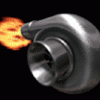Kaaz 2way Diff R32 $850
Announcements
-
Similar Content
-
Latest Posts
-
Get it on a dyno. Get something logging Consult. Run it up and find out what is causing it.
-
By BuiltNotBought · Posted
Looking for a plenum for rb25 de+t neo Not looking to push much power maybe 300kw at the wheels, is there much difference in flow for Freddy “Greddy style” compared to original Greddy or options like Proflow or Otaku garage? I won’t be porting the de Neo head for now as I think it’ll be fine 280-300rwkw but appreciate the help and any experiences anyone has between them and any advice. Thanks Looking at this plenum for now below -
engine wise almost no mods: stock ecu Greddy front mount intercooler Greddy forward facing intake w R33 TB stock fuel system, stock injectors, rail etc. Kakimoto racing hyper 3 inch exhaust system Apexi intake filter New NGK –R BCPRES (.8 gap) plugs
-
Nice one @Pac - looks like a fair few 1600's there!
-
I went to car and coffe near my place last month , few Nissan / Datsun spots for the SAU Crew , and I spotted and R33 at the local shops , it looks like it needs a bit of TLC , but good to see it on the road still.
-







Recommended Posts
Create an account or sign in to comment
You need to be a member in order to leave a comment
Create an account
Sign up for a new account in our community. It's easy!
Register a new accountSign in
Already have an account? Sign in here.
Sign In Now